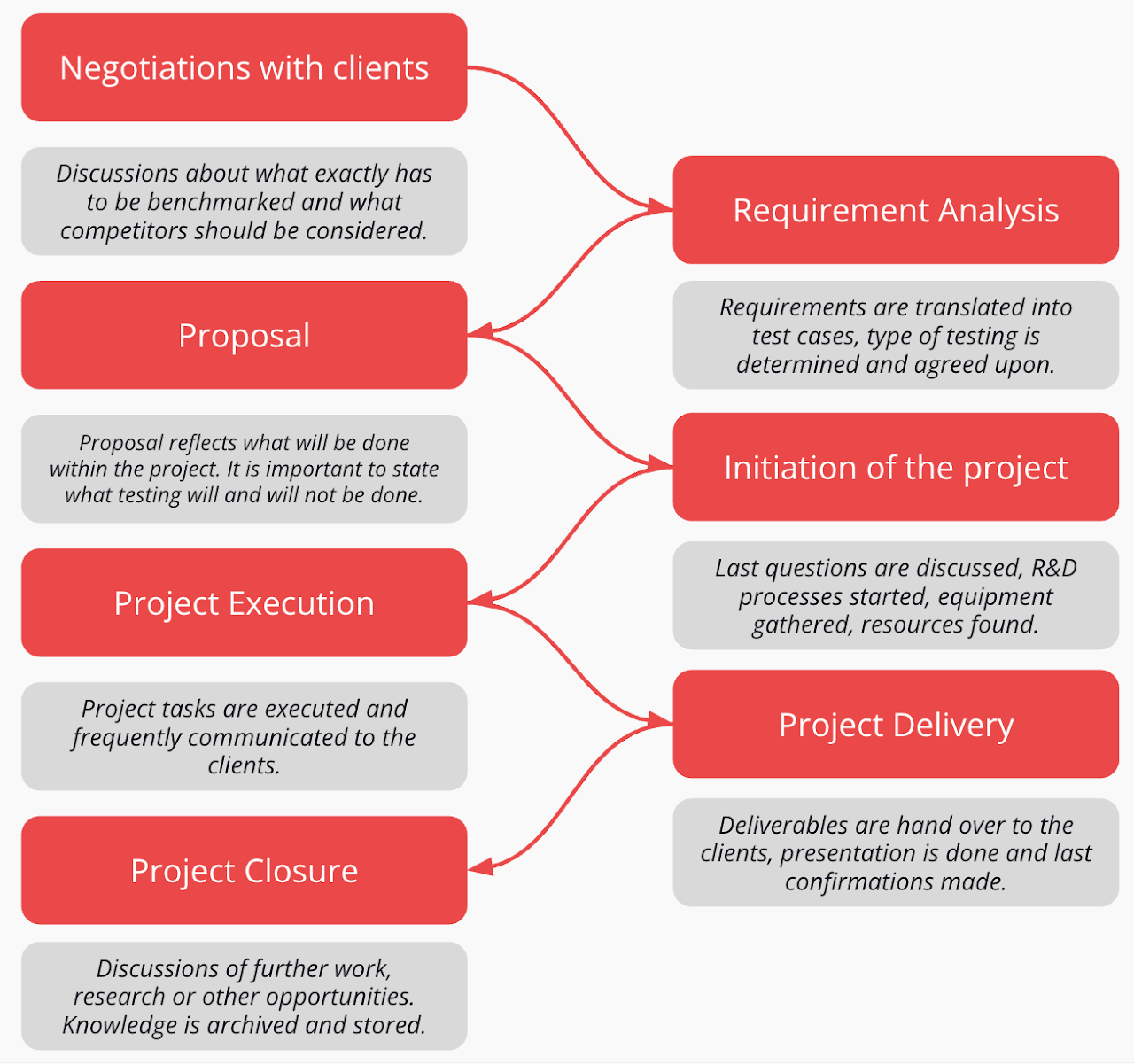Roadmap to Competitive Analysis
Generally, such project does not differ that much from the other testing projects. The biggest difference is that one competitive analysis & benchmarking project can contain many methodologies and testing types in one, so it is crucial that the communication is well established and criteria are understood.

Here are some guidelines that could help out to understand the general concept:
1. Negotiations with clients & requirement analysis:
The main idea for this step is to understand the product that they would like to benchmark either over time or to compare with competitors. In this step one must understand the product under test, the type of testing for benchmarking purposes, and competitors (if applicable). For example, Company 1 wants to test the AI chatbot performance of App 1 and see how results differ from App 2 and App 3.
2. Proposal:
- The proposal should reflect the core idea of the testing for the specific product, you have to explain what testing would be done to ensure proper benchmarking.
- You have to list and explore all competitors that will be included in the testing to ensure that they are testable (meaning they possess necessary functionality that could be tested with our methodology), available on a need basis, and do not have any policies that might interfere with the testing.
- You need to choose the right approach to testing - meaning that you need to find common ground for all applications and ensure the clients that all of these applications will be tested in the same way. If there are expected deviations - they must be agreed upon.
3. Initiation of the project, execution, delivery, and closure does not change compared to other projects that are within the company. However, some of the principles should be followed (see Core principles of competitive analysis & benchmarking).
4. Key deliverables at the end of the project can be (but are not limited to):
- Detailed methodology documentation - to ensure that clients understand how research or testing is conducted;
- Report as a slide deck or document that states the main findings during the investigation or testing, including data graphs that support our claims. Usually includes graphs that cover all data or the majority of it;
- Any other images or visualizations of the testing that would support the insights;